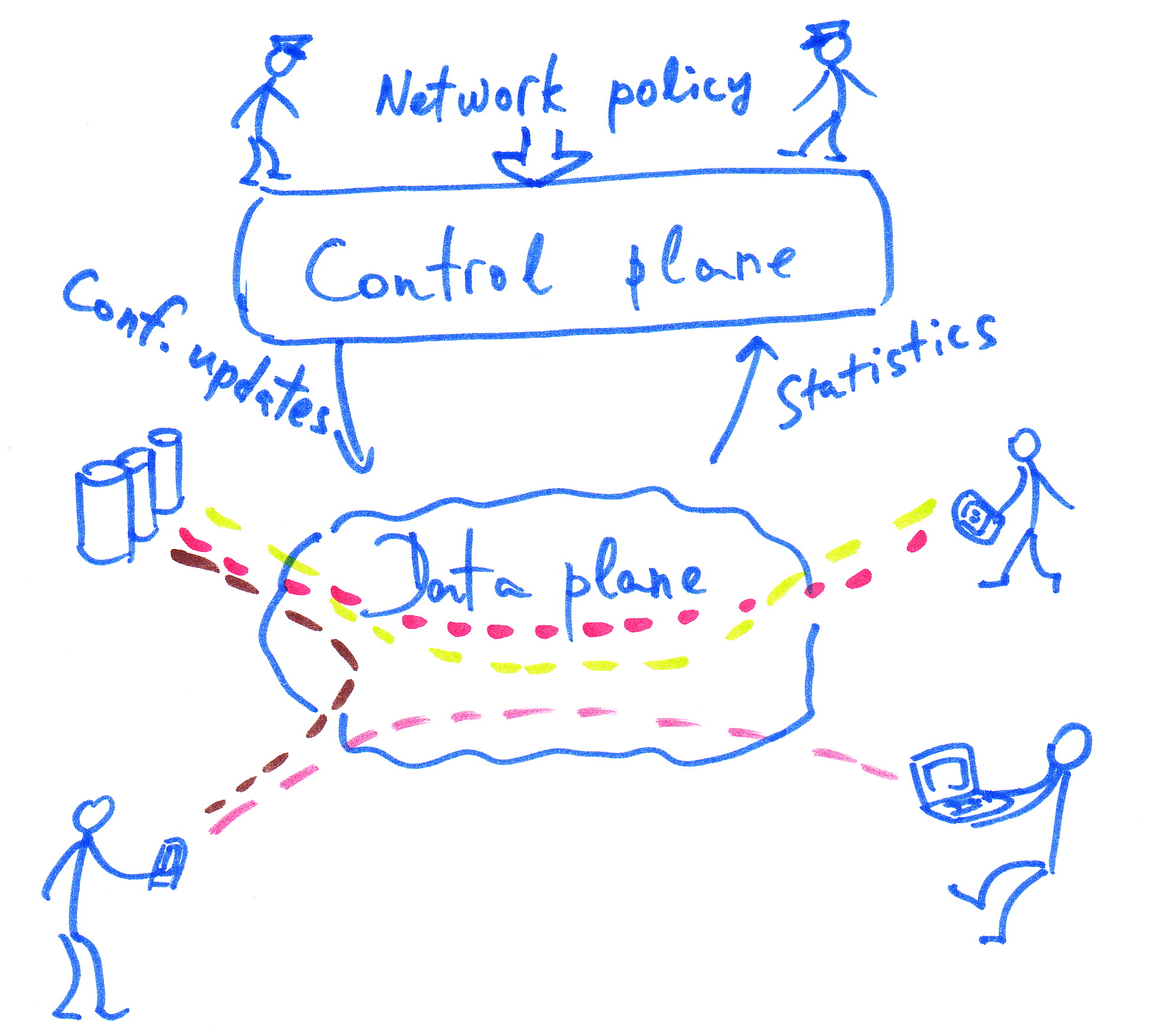
|
Computer networking currently goes through a transition phase: the paradigm of Software-Defined Networking (SDN) is discussed intensively, both in the industry and in the academia. In a nutshell, SDN out-sources the control over the network to a logically centralized software, called the control plane. The ability of the control plane to ``program'' the network (the data plane) opens new interesting opportunities to network operators and system designers.
While the perspective of a centralized controller simplifies network management, it comes with the usual drawbacks: single point of failure, scalability bottleneck, overhead due to indirection, etc. A fully centralized system may not adequately or cost-effectively provide the required levels of availability, responsiveness and scalability [3]. This raises the questions: What kind of a distributed control plane for SDN is needed?

|
In this project we treat the control plane as a full-fledged distributed system, and balancing consistency, efficiency and availability in network management becomes a classical problem of distributed computing, extensively studied in multiple other settings. The aim of this project is to sort out the problem space. Our running example is the fundamental problem of the correct implementation of the network policy, i.e., the intended network behavior. In case when the network is manipulated by a distributed system of controllers, the question of consistent and resilient policy composition becomes central. Indeed, concurrent operation on the same data plane by distributed controllers may lead to conflicts and inconsistent network operation. So the classical problems of synchronization and concurrency raise in this novel networking context.
We introduce the abstraction of Consistent Policy Composition (CPC) [1,2], which offers a transactional interface to address the issue of conflicting policy updates, in spired by the popular paradigm of software transactional memory (STM) [4]. We aim at devising a protocol that ensures both requirements, while providing optimal costs in terms of time and message complexity.